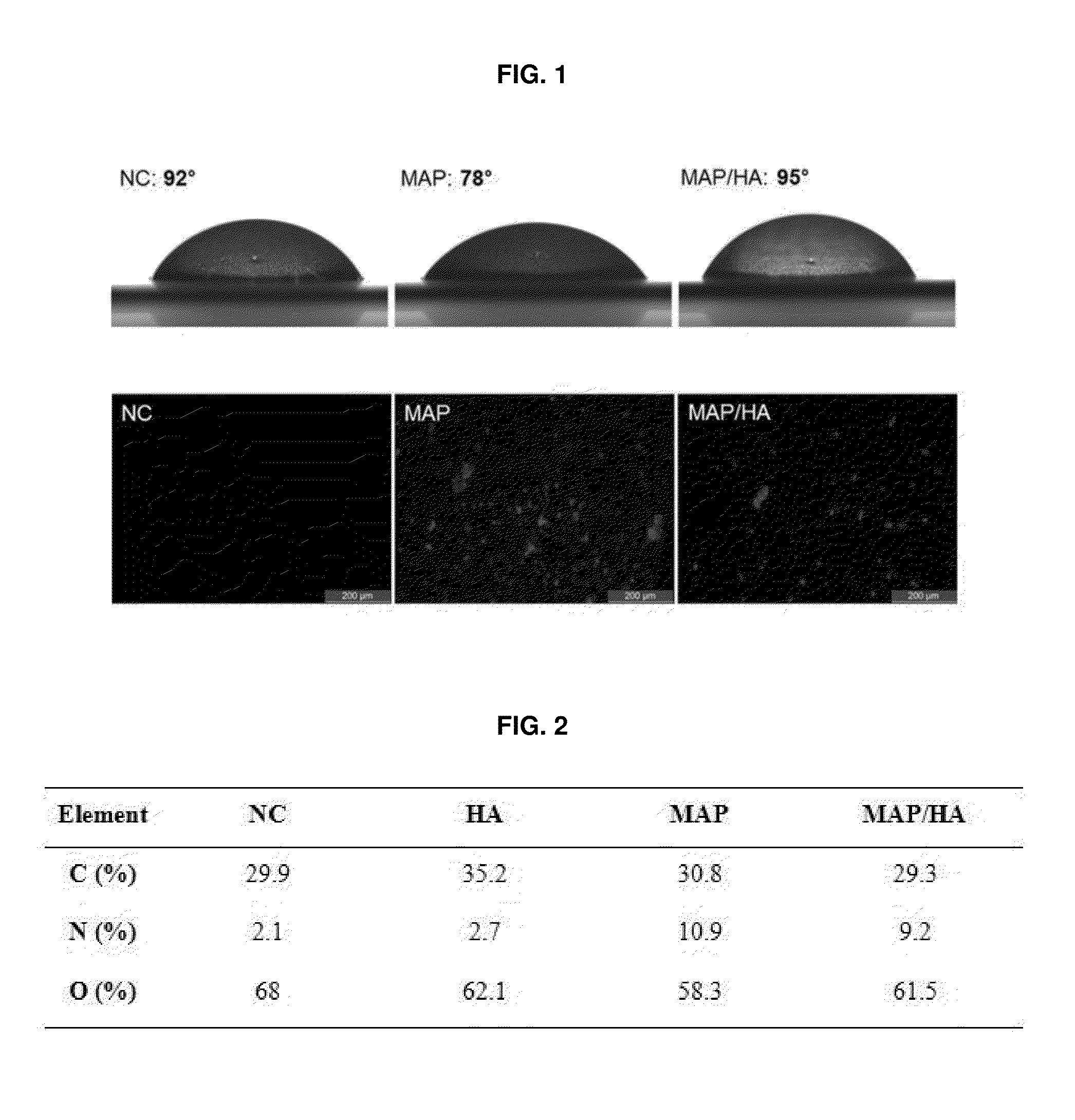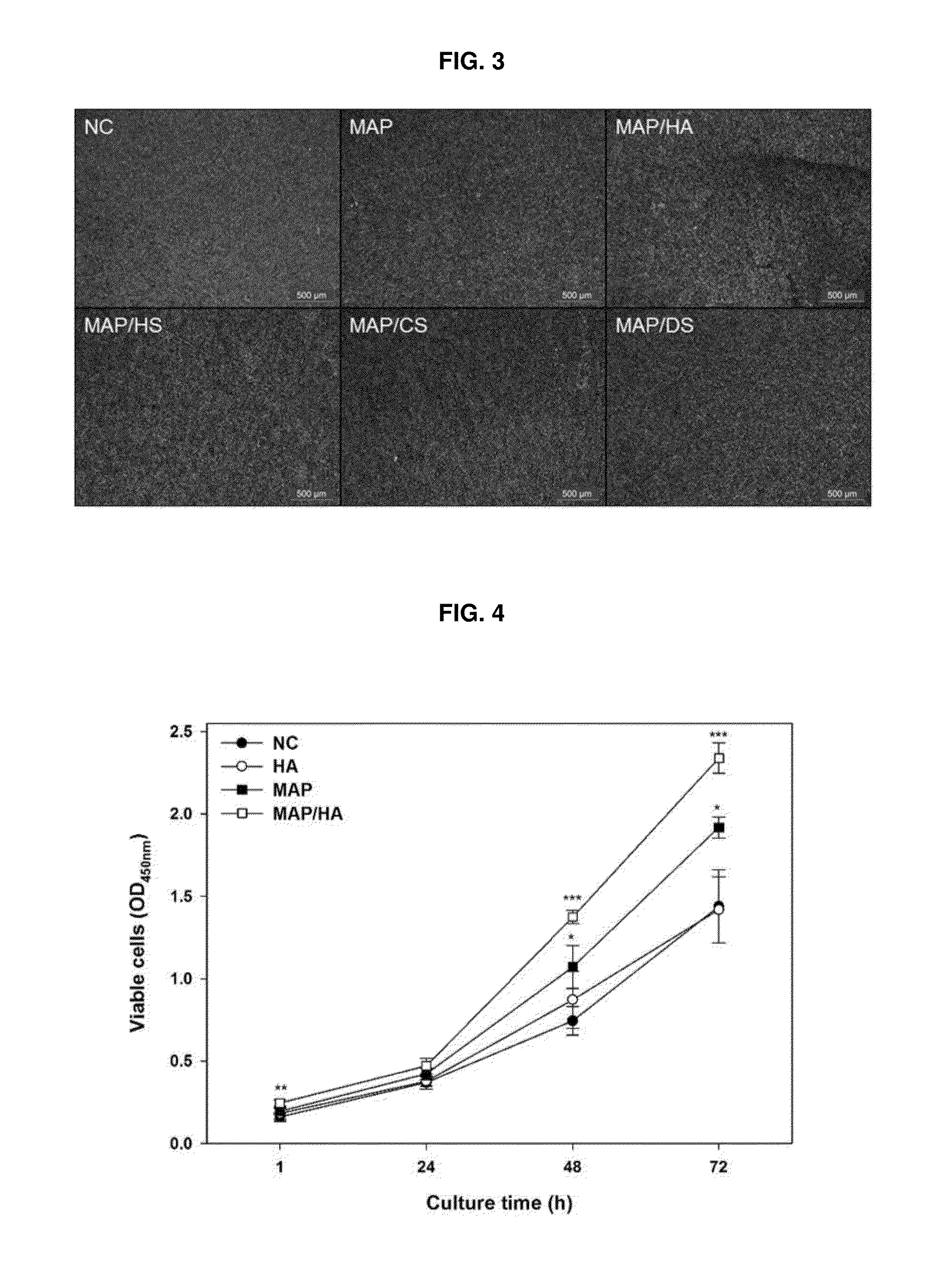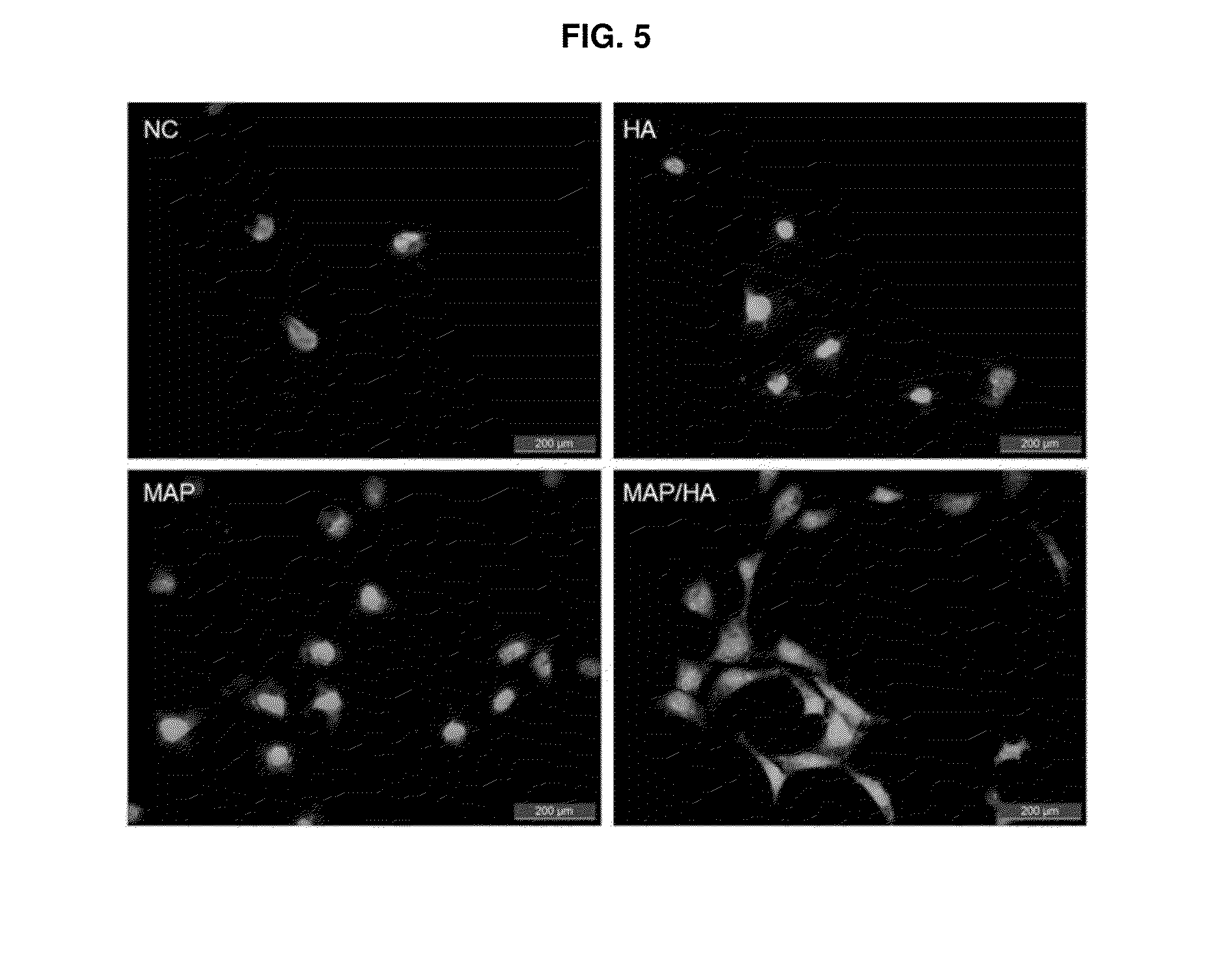Surface immobilization of various functional biomolecules using mussel adhesive protein
a technology of immobilization and functional bioactive substances, which is applied in the direction of peptides, skeletal/connective tissue cells, prostheses, etc., can solve the problems of many limitations of industrially utilizing naturally extracted mussel adhesive protein, the difficulty of sufficiently attaching, maintaining and growing bioactive substances such as cells on the surface of the scaffold, and the difficulty of fully solving the problem of mussel adhesive protein
- Summary
- Abstract
- Description
- Claims
- Application Information
AI Technical Summary
Benefits of technology
Problems solved by technology
Method used
Image
Examples
example 1
Coating of Various Biomaterials Using Mussel Adhesive Protein
[0077]1-1. Coating of Hyaluronic Acid on Titanium Surface Using Mussel Adhesive Protein fp-151
[0078]Mussel adhesive protein fp-151 (SEQ ID NO.1) is produced in E. coli, after synthesizing fp-1 variant wherein peptide consisting of AKPSYPPTYK is repeatedly connected 6 times in the amino acid sequence of naturally existing mussel adhesive protein fp-1 (Genbank No. Q27409), and inserting Mgfp-5 gene (Genbank No. AAS00463) between two fp-1 variants. The preparation of the mussel adhesive protein fp-151 is as described in WO 2005 / 092920, which is incorporated herein by reference.
[0079]Using the above prepared mussel adhesive protein fp-151, it was confirmed whether hyaluronic acid, biopolymer of negatively charged electrolyte, is coated on a titanium surface. Specifically, mussel adhesive protein fp-151 and hyaluronic acid having a molecular weight of 17 kDa (Lifecore Biomedical; Minnesota) were respectively dissolved in 10 mM ...
example 2
Preparation of Mussel Adhesive Protein-Based Nanofiber
[0097]2-1. Preparation of Nanofiber Through Blending of Mussel Adhesive Protein fp-151 and Various Synthetic Polymers
[0098]Nanofiber was prepared using recombinant mussel adhesive protein fp-151 alone or in combination with PCL (polycaprolactone), PDO (polydioxanone), PLLA (poly(L-lactide)), PLGA (poly(DL-lactide-co-glycolide)), PEO (polyethylene oxide) or PVA (polyvinyl alcohol), which is biodegradable polymer commonly used as tissue engineering material, by electrospinning. For blending with PCL, PDO, PLLA, PLGA, a HFIP (1,1,1,3,3,3-hexafluoroisopropanol)-based solvent was used, and for blending with PEO, PVA, a water-based solvent was used. PCL or PDO was dissolved in HFIP to a concentration of 6% (w / v), and PLLA or PLGA to a concentration of 12% (w / v), and then, fp-151 was dissolved in a solvent containing 90:10 (v / v) of HFIP and acetic acid to a concentration of 12% (w / v). And PCL or PDO was mixed with fp-151 at the ratio of...
example 3
Measurement of Properties of Mussel Adhesive Protein-Based Nanofiber
[0101]3-1. Surface Hydrophilicity Analysis Through Water Contact Angle
[0102]To examine surface hydrophilicities of nanofibers prepared by blending of PCL and fp-151 in , i.e., PCL, PCL / fp-151 (90:10), PCL / fp-151 (70:30), PCL / fp-151 (50:50), contact angle was measured. As results of measuring with CCD (charge-coupled device) imaging system (Surface and Electro-Optics), it was observed that as the ratio of fp-151 increases, contact angle decreases, thus confirming that hydrophilicity increases, which are shown in FIG. 9.
[0103]3-2. Fourier-Transform Infrared Spectroscopy (FT-IR) Analysis
[0104]To confirm exposure of fp-151 on the surface of nanofiber, Fourier-transform infrared spectroscopy analysis was conducted using Nicolet 6700 spectrophotometer (Thermo). As the result, it was confirmed that as the ratio of fp-151 increases, peaks become larger at 1650 cm−1 (amide I), 1540 cm−1 (amide II), which cannot be seen in PC...
PUM
| Property | Measurement | Unit |
|---|---|---|
| voltage | aaaaa | aaaaa |
| molecular weight | aaaaa | aaaaa |
| size | aaaaa | aaaaa |
Abstract
Description
Claims
Application Information
 Login to View More
Login to View More - R&D
- Intellectual Property
- Life Sciences
- Materials
- Tech Scout
- Unparalleled Data Quality
- Higher Quality Content
- 60% Fewer Hallucinations
Browse by: Latest US Patents, China's latest patents, Technical Efficacy Thesaurus, Application Domain, Technology Topic, Popular Technical Reports.
© 2025 PatSnap. All rights reserved.Legal|Privacy policy|Modern Slavery Act Transparency Statement|Sitemap|About US| Contact US: help@patsnap.com



